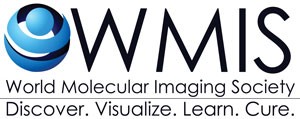Noninvasive molecular imaging using reporter genes is a relatively recent field in biomedical imaging that holds great promises for disease diagnosis and therapy. Reporter imaging can provide noninvasive assessments of endogenous biologic processes in living subjects and can be performed using different imaging modalities. For example, reporter gene imaging can be used to monitor the trafficking and homing of therapeutic immune cells to tumor sites. Molecular imaging, and noninvasive reporter gene imaging in particular, are making important contributions to our understanding of disease development, progression, and treatment in our current era of molecular medicine and individualized patient care.
Reporter Gene Imaging
Veerle Baekelandt, Laboratory for Neurolobiology & Gene Therapy, Division of Molecular Medicine. K.U. Leuven, Flanders, Belgium
Learning Objectives:
- To get acquainted with different reporter gene systems for different imaging modalities.
- To learn about preclinical applications of reporter gene imaging in vivo.
- To get insight into the clinical translation of reporter gene imaging.
A variety of imaging techniques have been developed that allow non-invasive detection of gene expression or cells within intact mammals, ranging from mouse to man. The basic concepts of these imaging techniques will be discussed. Different imaging reporter genes have been developed that can be detected and quantified by these imaging methods which allow us to unravel the temporospatial dynamics of gene expression or cells within the intact living animal. We will explain methods to introduce reporter genes in cells and in vivo. Applications of reporter gene imaging can be found in different research fields. We will give some examples of the use of imaging reporter genes in preclinical neuroscience. We will highlight the potential impact of reporter gene imaging in the preclinical evaluation and clinical implementation of gene and cell therapy.
How to Introduce Reporter Genes in Cells
Christophe M. Deroose, Nuclear Medicine, UZ Leuven, Leuven, Belgium; Imaging & Pathology, KU Leuven, Leuven, Belgium
Learning Objectives:
- Knowing the different molecular biology strategies to introduce reporter genes into cells
- Recognizing the advantages and weaknesses of these different strategies
- Critical appraisal of strategies to express more than one single gene
- Influence of introduction route on signal quantification
This session will focus on the different techniques available to introduce imaging reporter genes in cells, both in vitro and in vivo. Techniques discussed will include plasmid transfection, viral vectors (retro, adeno, lenti and addeno-associated) and gene locus targeting strategies. An overview will also be provided on techniques to couple reporter gene expression to expression of a gene of interest (therapeutic or disease inducing). We will further look into the quantitative aspects of reporter gene imaging and on those aspects of the gene introduction strategy on signal quantification. Finally, we will discuss how reporter gene imaging can be used to monitor gene therapy.
Reporter-based imaging of therapeutic immune cells
Il Minn, Radiology, Johns Hopkins University, Baltimore, MD, USA
When therapeutic cells are injected into the human body, it is necessary to follow them to see if they reached the target tumor, and monitor efficacy. This presentation describes reporter-based imaging to track therapeutic immune cells.
Engineering genetically encoded reporters using mammalian cell-expressible de novo proteins
Brian Y. Chow, Bioengineering, University of Pennsylvania, Philadelphia, PA, USA
This talk highlights a new platform of reporter genes engineered by mammalian cell-expressible de novo proteins.
